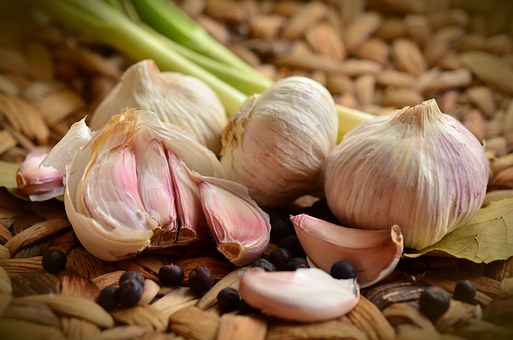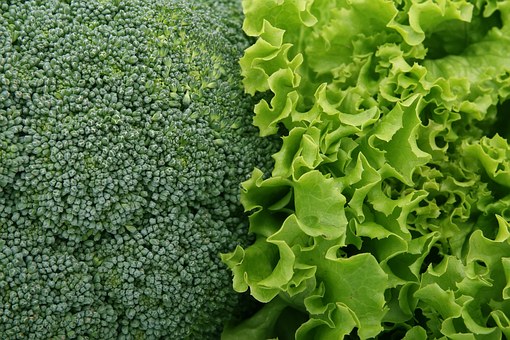Phytonutrients Explained

A variety of these beneficial compounds have been identified by researchers in helping the body to maintain peak health and combat disease, and a growing body of research strongly links the importance of diet to health.
Studies are showing that as we move away from the natural, plant-based diet of our ancestors we succumb to "modern" diseases. Evidence of this can be seen in remote societies who still embrace traditional dietary practices. These people have been reported to live extraordinarily long lives that are free of such illnesses as cancer, heart disease and arthritis.
How Do phytonutrients Protect Against disease?
Here are a few ways in which these beneficial compounds protect human health:
- Serve as antioxidants
- Enhance immune response
- Enhance cell-to-cell communication
- Cause cancer cells to die (apoptosis)
- Repair DNA damage caused toxic substances
- Detoxify carcinogens
Phytonutrients are grouped into classes depending on their protective functions as well as individual physical and chemical characteristics of the molecules. Each class offers a unique kind of protection for the body. But for overall health, all classes of phytonutrients should be consumed, and an easy way to boost phytonutrient intake is to simply eat a mix of naturally colorful foods.
Here are the main classes of phytochemicals and some of their individual health-boosting properties.
Phenols
These phytonutrients form a large class that have been the subject of extensive research as a disease preventive. Phenols protect plants from oxidative damage and perform the same function for humans. Food sources rich in polyphenols include onion, apple, tea, red grapes, grape juice, strawberries, raspberries, blueberries, cranberries, and certain nuts.
Another outstanding feature of phenols is their ability to block specific enzymes that cause inflammation. Some of the subclasses in this group are:
- Flavonoids: These have red, blue and purple pigments and help to enhance the effects of Vitamin C. There are well over 1500 flavonoids and the most extensively studied are quercetin and catechins, which have benefits for absorption and metabolism. They also protect the vascular system and strengthen the tiny capillaries that carry oxygen and essential nutrients to all cells. Additionally, flavonoids block the enzymes that produce estrogen, thus reducing the risk of estrogen-induced cancers.
- Anthocyanidins: This select group of flavonoids are particularly special because they connect and strengthen the intertwined strands of collagen protein. Collagen is the most abundant protein in the body, making up soft tissues, tendons, ligaments and bone matrix. Its strength depends on the preservation of these connections.
- Catechins & gallic acids: Catechins differ slightly in chemical structure from other flavonoids, but share their chemoprotective properties. The most common catechins are found in green tea and are thought to be responsible for the protective benefits of this beverage.
Terpenes
Terpenes are one of the largest classes of phytonutrients and are found in green foods, soy products and grains. The most popular terpenes are carotenoids, such as Beta-carotene. Terpenes function as antioxidants, protecting lipids, blood and other body fluids from attack by free radicals, which cause disease.
- Carotenoids: This terpene subclass consists of bright yellow, orange and red plant pigments. Of all the phytonutrients, the most research has been carried out in this class of compounds. Fruits and vegetables that are high in carotenoids appear to protect humans against certain cancers, heart disease, and age-related macular degeneration. Some of the more common carotenoids are:
- alpha-carotene - carrots, sweet potatoes
- Beta-carotene - leafy green and yellow vegetables (eg. broccoli, sweet potato, pumpkin, carrots)
- Beta-cryptoxanthin - citrus, peaches, apricots
- lutein - leafy greens such as kale, spinach, turnip greens
- lycopene - tomato products, pink grapefruit, watermelon, guava
- zeaxanthin - green vegetables, eggs, citrus
- Limonoids: This group of terpenes is found in citrus fruit peels, and appears to be specifically directed to the protection of lung tissue and also has chemopreventive properties.
- Phytosterols: Sterols occur in most plants. Although green and yellow vegetables contain significant amounts, their seeds concentrate the sterols, like those found in pumpkins. Phytosterols have demonstrated the ability to block the uptake of cholesterol (to which they are structurally related) and help to excrete it from the body.
Other investigations have revealed that phytosterols block the development of tumors in colon, breast and prostate glands.
- Tocotrienols and tocopherols: Tocotrienols naturally occur in grains and palm oil along with their cousins, tocopherols. They both have Vitamin E activity and tocotrienols in addition appear to inhibit breast cancer cell growth. Good sources are oils like wheatgerm, sunflower, rapeseed and avocados.
Glucosinolates
Found in cruciferous vegetables, glucosinolates are powerful activators of liver detoxification enzymes. They also regulate white blood cells which coordinate the activities of all immune cells. Their actions involve blocking enzymes that promote tumor growth, particularly in the breast, liver, colon, lung, stomach and esophagus. Some examples of foods containing glucosinolates are broccoli, cabbage, garlic and mustard.
Indoles
This subclass includes phytonutrients that interact with Vitamin C, and the vegetables that contain indoles also contain significant amounts of Vitamin C. Indole binds to carcinogens and activates detoxification enzymes.
Allylic Sulfides
Garlic and onions are the most potent members of this class, which also includes leeks, shallots and chives. The allylic sulfides in these plants are released when the plants are cut or smashed. As a group, allylic sulfides appear to possess antimutagenic and anticarcinogenic properties as well as immune and cardiovascular protection. They also appear to stop the growth of tumors, fungi, parasites and cholesterol. Garlic and onions, like their cruciferous relatives, can also activate liver detoxification enzyme systems.
A growing body of research has linked the consumption of fruit and vegetables and other foods that are naturally high in phytochemcials with lowering the risk for chronic diseases including specific cancers and heart disease, and protecting health in general. Therefore an effective way to boost health and reduce the risk of cancer and heart disease is to increase consumption of phytonutrient-rich foods including fruits, vegetables, grains and teas.
Link to this article: Show: HTML Link • Full Link • Short Link
Share or Bookmark this page: You will need to have an account with the selected service in order to post links or bookmark this page.





|
Related Articles:
- Tea Contains Health-Promoting Polyphenols
- New Research on the Powerful Benefits of Garlic
- Nutrients and Superfoods for Healthy Skin
- Carrots Have Many Health Benefits
- Fruits and Vegetables Rich in Lutein Good For Age-Related Cataracts According to Study
- What Foods Are Good For Your Eyesight?
- Twenty Foods That Help Slow Down The Ageing Process Says Professor Studying Polyphenols
- Five Superfoods You Should Be Eating Everyday
You must be registered and logged in to comment.
Most Popular
Latest Articles
Popular Subjects
Health, fitness and longevity
Based upon the principles of health
in the Qur'an and Prophetic Traditions.
HealthyMuslim.Com
There are two bounties in which
most people lose out: good health
and free time. Al-Bukhari.























